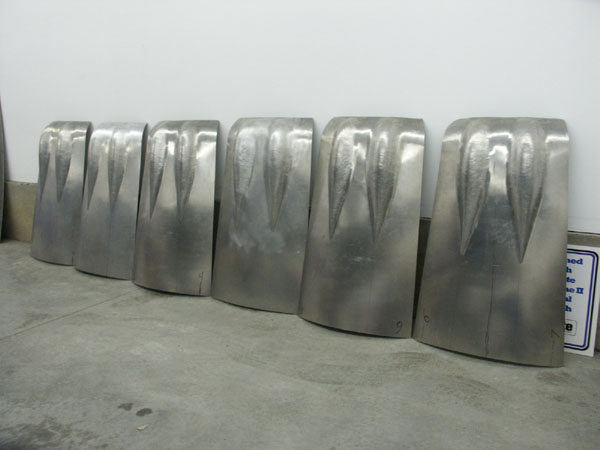Forming the Bumps
The bumps on a bump cowling are reliefs that are added to clear the rocker boxes on the engine cylinders. Using bumps makes a cowling a lot more complex to build, but it allows for a smaller cowling front area and thus reduces drag.
Sometimes bumps are added by cutting the cowling and riveting on a "bump" piece to the outside of the cowling. These are relatively easy to build because the bumps are small pieces that can be easily positioned. This type of construction is often seen with round cowlings that are formed from a spinning.
In the case of the Ryan, the bumps are formed into the metal sections of the cowling without any riveted-on pieces. To build them, the bumps are "stretched" from the inside towards the outside of the cowling panel sections. To get a consistent shape, the stretching is done into a female mold of the bumps.
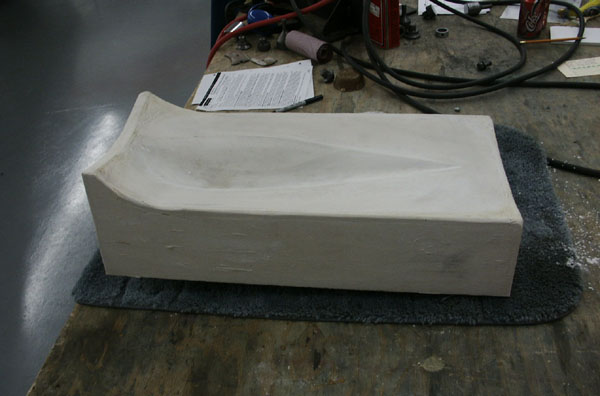
The plaster mold was constructed by using the cardboard templates taken from the original to build a modeling clay plug. The plug was then used to build the mold out of high-strength plaster, encased in a wooden box. The resulting mold weighs about 70 pounds. It turns out the plaster mold didn't hold up to hammering, so a concrete mold was made using the same technique.
The curved cowling sections were then clamped into place onto the mold. A sheet of Teflon is used between the mold and the metal to help lubricate the part. Then a lot of hammering goes into stretching out the metal into the mold.
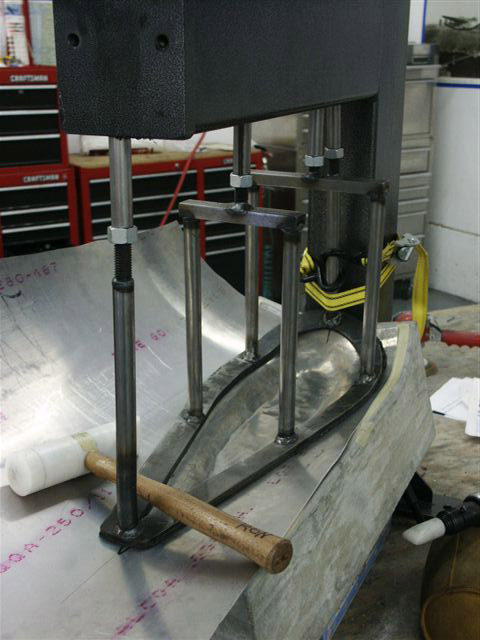
The trick is to hammer in the right place as the right time to gradually stretch the metal into the bump shape. If too much stretching takes place in a single area of the bump then the metal becomes too thin, which results in a crack. As hammering is done the metal also work hardens, so periodic annealing is required to keep the metal soft and avoid cracks.
Here is an example of a crack from over-stretched, too thin material. These are throwaway pieces once they're cracked.
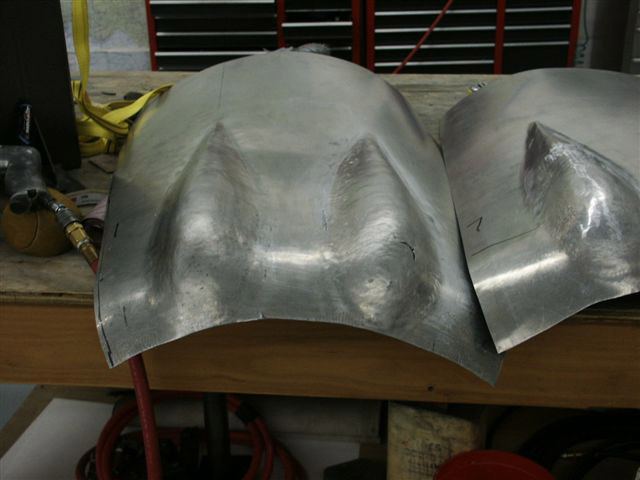
Here's a good bump, which is still rough but ready for fit-up on the airplane and then planishing to smooth out the forming marks.
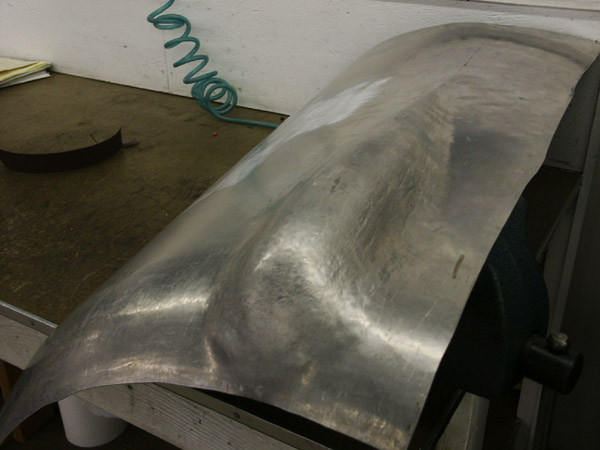
This is what the back side looks like:
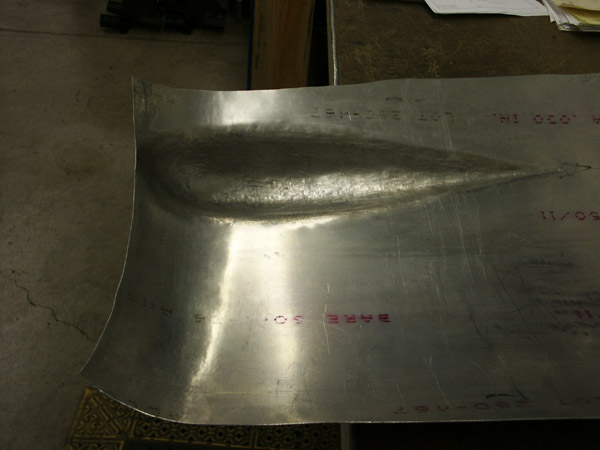
Next is fitting up on the airplane, adjusting the shape by hammering to exactly fit the round curve on the front and the irregular oval shape on the back. A piece of plywood attached to the prop hub helps align the front.
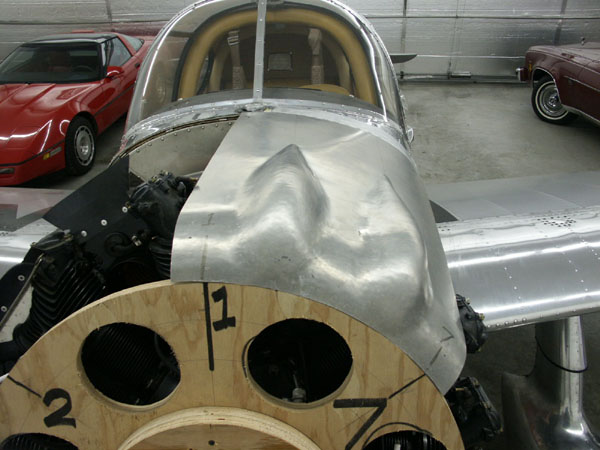
Here's a side view:
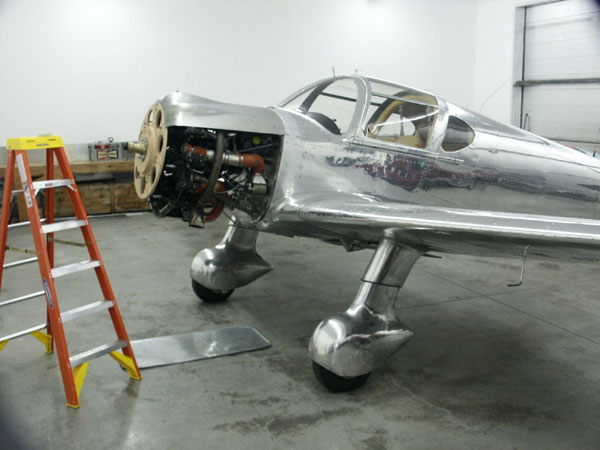
All of the panels, fitted and ready for fitting together:
